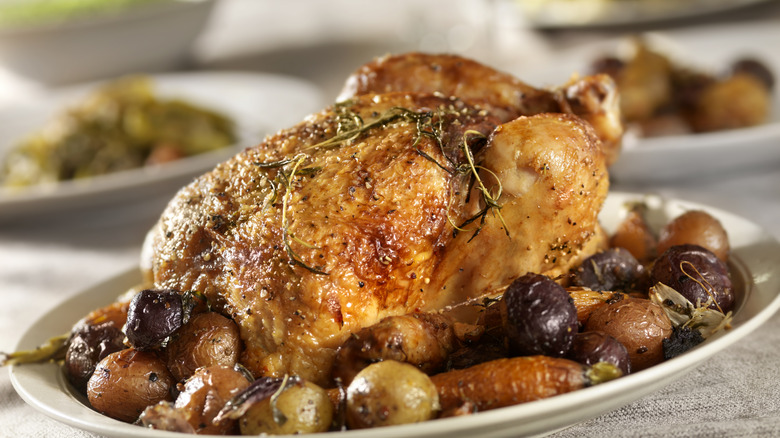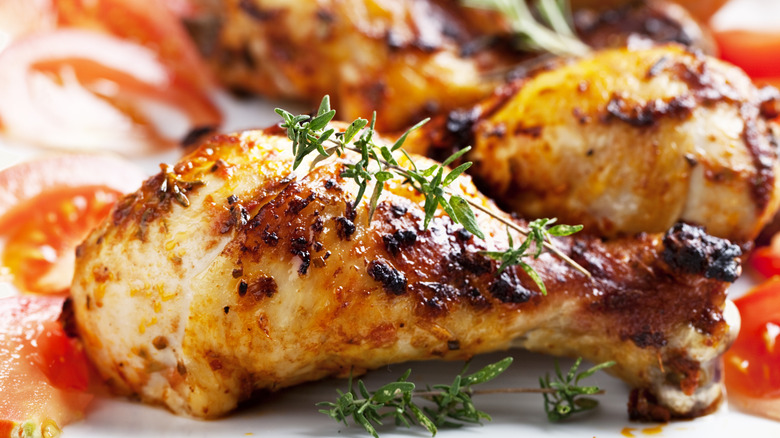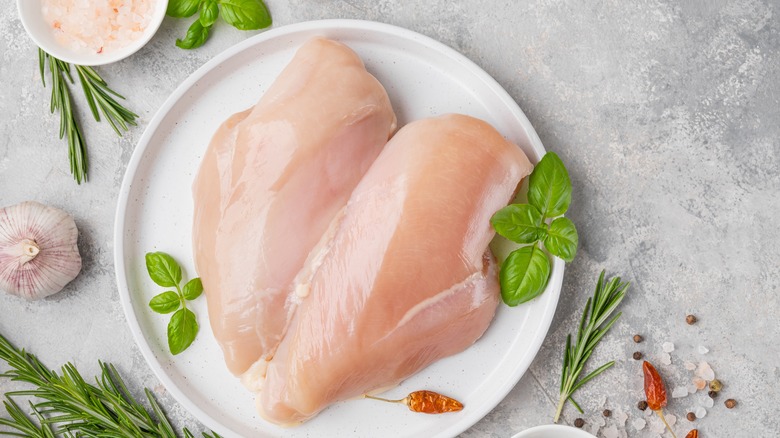For Perfect Chicken, The Temperature Of Dark Vs. White Meat Matters
For such a universal protein, chicken can sometimes be harder to work than expected. From letting your chicken breasts get too dry to failing to render the fat on thighs, there are all sorts of goofs when it comes to chicken. One could argue that there are as many ways to mess up chicken as there are ways to cook it — and there are a lot of ways to cook it.
One of the most prominent — and most dangerous — ways to get it wrong is failing to get the temperature right. A common mistake is assuming that every part of the bird should be cooked to the same temperature. The temperature you need isn't based on the cooking method used, but on which part of the bird you're working with.
A lot of people don't realize that white meat and dark meat have different cooking requirements, thanks to their differing fat contents. While they both have a minimum internal temperature required for food safety, you can cook dark meat for longer to help it taste better.
Dark meat is better when cooked longer than necessary
For safety, you want both your white and dark meat cooked to an internal temperature of 165 degrees Fahrenheit, according to the United States Department of Agriculture. However, you can generally pull white meat at either 155 or 160 degrees, because residual heat will cook it the rest of the way.
The key here is to be cautious with cuts of white meat like chicken breast. These leaner cuts have more of a tendency to dry out if they are cooked much more than 165 degrees Fahrenheit. This is also the reason that a hard sear, followed by baking is such a great way to cook white meat.
Dark meat has a much higher fat content and much more connective tissue. Cooking thighs or drumsticks to somewhat higher temperatures thus doesn't dry them out, unless you go overboard. Instead, cooking dark meat for longer will result in the connective tissue breaking down and becoming juicier. The temperature you're looking for with dark meat is around 175 to 190 degrees Fahrenheit.
Cooking chicken for less time than necessary is risky
As for why it's so important to internal chicken temperatures, the answer is simple: you don't want to get sick. All raw meat can be iffy when it comes to foodborne illness, but none is as risky as chicken. While steak and pork can be cooked to medium or medium-rare, you absolutely do not want to do this with chicken.
Poultry is notorious for harboring bacteria such as salmonella, campylobacter, and Clostridium perfringens, all of which can and will give you food poisoning, as the Centers for Disease Control and Prevention explains. These bacteria are the same reason you should never wash raw chicken. Doing so can cause bacteria to spread throughout your kitchen.
But as long as you hit those internal temps, you're golden. Bacteria can't survive beyond a certain level of heat. Just be sure to remember that dark meat can handle being cooked for longer than white meat.


